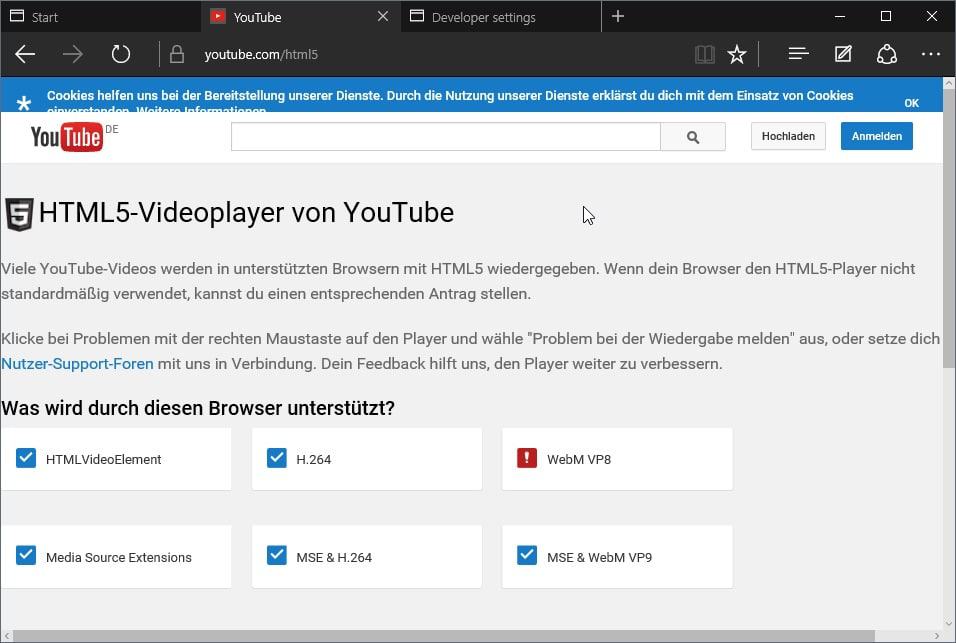

- HTML5 VIDEO PLAYER STREAMING SOFTWARE
- HTML5 VIDEO PLAYER STREAMING CODE
- HTML5 VIDEO PLAYER STREAMING DOWNLOAD
- HTML5 VIDEO PLAYER STREAMING FREE
This is an ongoing issue and this section will be updated once more information is available. However, there are no known codecs that satisfy all the current players: we need a codec that is known to not require per-unit or per-distributor licensing, that is compatible with the open source development model, that is of sufficient quality as to be usable, and that is not an additional submarine patent risk for large companies. It would be helpful for interoperability if all browsers could support the same codecs. User agents should support Theora video and Vorbis audio, as well as the Ogg container format. But on 10 December 2007, the HTML5 specification was updated, replacing the reference to concrete formats: Initially, Ogg Theora was the recommended standard video format in HTML5, because it was not affected by any known patents.
HTML5 VIDEO PLAYER STREAMING SOFTWARE
In addition to software decoders, a hardware video decoder should exist for the format, as many embedded processors do not have the performance to decode video.Have good compression, good image quality, and low decode processor use.The HTML5 Working Group considered it desirable to specify at least one video format which all user agents (browsers) should support.
HTML5 VIDEO PLAYER STREAMING FREE
User agents are free to support any video formats they feel are appropriate, but content authors cannot assume that any video will be accessible by all complying user agents, since user agents have no minimal set of video and audio formats to support. The HTML5 specification does not specify which video and audio formats browsers should support. The MIME type denotes the container format of the file, and the container format defines the interpretation of the codec string.
HTML5 VIDEO PLAYER STREAMING DOWNLOAD
The "type" attribute specifies the MIME type and possibly a list of codecs, which helps the browser to determine whether it can decode the file without beginning to download it.

Alternatively, the JavaScript canPlayType() function can be used to achieve the same. Using any number of elements, as shown below, the browser will choose automatically which file to download.

The "video" element supports fallback through specification of multiple sources. The browser in question "knows best" what formats it can use. For other features, browser sniffing is used sometimes, which may be error-prone: any web developer's knowledge of browsers will inevitably be incomplete or not up-to-date. Video format support varies among browsers (see below), so a web page can provide video in multiple formats. Its purpose is to be representative of the video. The optional "poster" attribute specifies an image to show in the video's place before playback is started. Alternatively, playback can be controlled with JavaScript, which the web designer can use to create a custom user interface. The "controls" attribute enables the browser's own user interface for controlling playback. This is fallback content to display for user agents that do not support the video tag.
HTML5 VIDEO PLAYER STREAMING CODE
The following HTML5 code fragment will embed a WebM video into a web page. Opera also released a preview build that was showcased the same day, and a manifesto that called for video to become a first-class citizen of the web. The element was proposed by Opera Software in February 2007. The element started being discussed by the WHATWG in October 2006. As of 2020, HTML5 video is the only widely supported video playback technology in modern browsers, with the Flash plugin being phased out. HTML5 video is intended by its creators to become the new standard way to show video on the web, instead of the previous de facto standard of using the proprietary Adobe Flash plugin, though early adoption was hampered by lack of agreement as to which video coding formats and audio coding formats should be supported in web browsers. The HTML5 specification introduced the video element for the purpose of playing videos, partially replacing the object element.


 0 kommentar(er)
0 kommentar(er)
